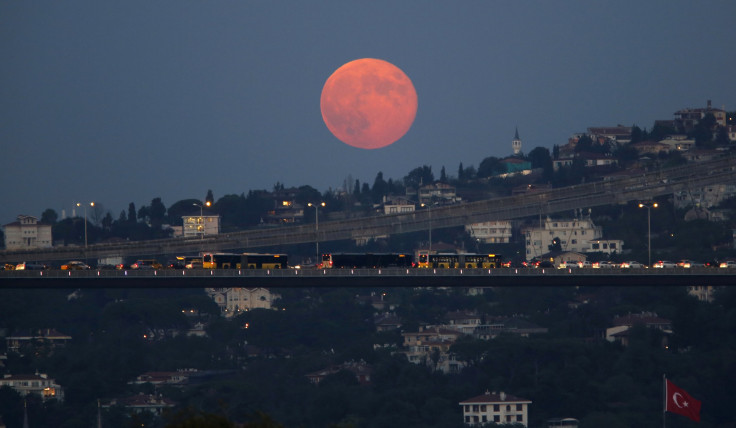Supermoon Total Lunar Eclipse: NASA To Live Stream Blood Moon

The supermoon total lunar eclipse, a rare astronomical event, will be visible to much of the world. And for those experiencing bad weather in parts of the U.S., NASA will live stream the supermoon eclipse.
People in the eastern part of North America and all of South America will witness the celestial event after sunset Sunday, Sept. 27, whereas those in Europe, the Middle East and Africa can view the supermoon eclipse in the predawn hours of Sept. 28. This will be the first supermoon eclipse in 33 years and next such event will occur only in 2033, according to NASA.
Clouds and storms are likely to hamper viewing conditions in western U.S. and NASA’s live stream will prove helpful for sky-watchers. It will broadcast the supermoon eclipse from 8:00 p.m. EDT until at least 11:30 p.m. EDT from Marshall Space Flight Center in Huntsville, Alabama, with a live feed from the Griffith Observatory in Los Angeles, the Adler Planetarium in Chicago, Fernbank Observatory in Atlanta and other locations across the country, NASA said in a statement.
Apart from this, astronomy enthusiasts can ask Mitzi Adams, a NASA solar physicist at Marshall, their queries related to the supermoon total lunar eclipse using #askNASA.
Slooh -- an online robotic telescope service -- will also live stream the rare event. It will report from the U.S. and the United Kingdom and the live broadcast will begin at 8 p.m. EDT.
The supermoon, which will also serve as a September harvest moon, will begin to dim at 8:11 p.m. EDT Sunday, according to NASA. The total lunar eclipse will start at 10:11 p.m. EDT, peaking at 10:47 p.m. EDT. The lunar eclipse will give the moon a reddish glow and will last an hour and 12 minutes.
"Because the orbit of the moon is not a perfect circle, the moon is sometimes closer to the Earth than at other times during its orbit," Noah Petro, deputy project scientist for the Lunar Reconnaissance Orbiter at NASA’s Goddard Space Flight Center in Greenbelt, Maryland, said.
"When the moon is farthest away it’s known as apogee, and when it’s closest it’s known as perigee. On Sept. 27, we’re going to have a perigee full moon -- the closest full moon of the year," Petro added.
The moon is about 31,000 miles closer to Earth at perigee and this distance is equal to more than once around the circumference of Earth, NASA stated. Because of its closeness to Earth, the moon appears 14 percent larger and 30 percent brighter resulting in a supermoon.
While news of the supermoon excited some, it unsettled a few people, sparking speculations about the end of the world. However, NASA guaranteed that no such catastrophic event will happen due to the supermoon eclipse.
The supermoon total lunar eclipse is a rare astronomical event. Since 1900, just five such occurrences were recorded (in 1910, 1928, 1946, 1964 and 1982), according to NASA.
© Copyright IBTimes 2024. All rights reserved.






















